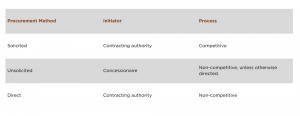Zambian Refines Public-Private Partnership (PPP) Model

Parliament is expected to usher in a more robust public-private partnership (“PPP”) framework in 2023 and is currently considering the Public Private Partnership Bill (the “PPP Bill”) which came up for first reading on 28 July 2023. Leading up to this Bill, government has emphasized the importance of PPPs to Zambia’s development agenda and has through various contracting agencies, continued to negotiate concessions for PPP projects under the soon to be replaced 2009 Public-Private Partnership Act (the “PPP Act”)
PPPs are seen as a lifeline for infrastructure development and increased private sector participation in various key economic sectors such as road infrastructure, mining, energy, agriculture, health, and others. As a sustainable financing mechanism for intensive capital projects, the importance of PPPs to Zambia cannot be over-emphasized, considering the prevailing limited fiscal space and constraint on the treasury. The PPP Bill aims to achieve a fair, equitable, transparent, competitive, cost-effective and long-term sustainability of PPP projects.
Procurement of PPP Projects
The PPP Bill maintains the solicited and unsolicited methods of procuring PPP projects provided in the PPP Act. It also introduces direct procurement as the third method of procuring PPP projects by contracting authorities. A contracting authority is any public body that can enter into a PPP agreement and intends to have any of its functions performed by a concessionaire or a private entity with whom a PPP agreement has been concluded. The PPP Bill extends the definition of “contracting authority” to include a parastatal. A contracting authority can also be a government ministry or department, a local authority, or any statutory body.
PPPs can be developed across a wide range of economic sectors such as transport, energy, mining or may relate to public service sectors like health and education. A cost-benefit analysis of any intended PPP project must be carried out by the contracting authority before it is approved for implementation.
If enacted into law, the PPP Bill will provide increased transparency in the development of PPPs. Contracting authorities will be required to submit the lists of projects they intend to undertake under as solicited projects, to the Public Private Partnership Office (the “PPP Office”) (known as the Public Private Partnership Authority under the PPP Act) for approval.
Private sector developers will also be able to initiate PPP projects by submitting unsolicited proposals to contracting authorities. A contracting authority in receipt of an unsolicited bid from a prospective concessionaire will be required to notify the PPP Office about receipt of the proposal and conduct a preliminary evaluation of the received proposal.
The PPP Bill also provides for direct procurement where a contracting authority may negotiate a PPP agreement outside the solicited or unsolicited procurement methods. This method is limited to specific projects such as those involving national defence or security or where only one source is capable of providing the required service.
A summary of the procurement methods under the PPP Bill and the procedures involved is as follows:

The process for solicited, unsolicited and directly procured projects will be considered in depth in the coming series of articles.
Eligibility to Participate in a PPP
Under the PPP Bill, any person in the private sector may participate in a PPP project by financing, constructing, rehabilitating, maintaining, operating and managing such project under any of the various PPP models in the PPP Bill.
The PPP Bill contains 17 PPP models by which PPP projects may be implemented. These models can be varied or combined to come up with a suitable hybrid model as the circumstances may require. One of the more common and widely used PPP models is the Build Operate and Transfer (BOT) model where a concessionaire finances and constructs a given infrastructure facility and operates it for a fixed period during which they collect levies and other user fees as agreed in the PPP agreement with a contracting authority to recover their investment. By the end of the PPP agreement, the concessionaire would have recovered its investment and made a profit and can therefore transfer the infrastructure to the contracting authority. This model is common in road projects where the concessionaire recovers their investment by charging toll fees.
Incorporation of Project Special Purpose Vehicle (SPV)
The PPP Bill introduces a requirement for a successful bidder (including a bidding consortium) of a procurement process to incorporate a project company or SPV in Zambia, through which the PPP agreement is to be performed. A concessionaire cannot wind up the SPV, alter its legal structure or reduce its share capital without the consent of the contracting authority.
Party Interests in PPP Agreement
The PPP agreement governs the relation between the contracting authority and a concessionaire, allocating rights, risks and obligations between the parties.
The Concessionaire
A key objective for a concessionaire undertaking a PPP project is the financial return on the investment. The investment is generally recovered by charging user fees or levies to the public for the use of the infrastructure. In some cases, particularly in relation to public or social services, the contracting authority may make payment to the concessionaire. A concessionaire would also be entitled to assistance from the contracting authority in relation to the acquisition of land and permits from various regulatory bodies required to implement the PPP project.
Contracting Authority
For a contracting authority, there are several justifications for entering into a PPP. Key among these is the assurance of quality infrastructure from the expertise of the concessionaire which may not be available in-house within the contracting authority. Financial resources are saved or channeled to other competing needs since the PPP project will be financed by the concessionaire, which will generally recover the investment by collecting user fees from the public. The contracting authority also takes ownership and control of the project at the termination or expiration of the PPP agreement.
Essentially, a well-structured PPP project is one that balances the objectives of the contracting authority, the concessionaire and the public by:
- balancing and allocating the risks associated with the PPP project to the appropriate party, through the PPP agreement;
- reflecting value for money;
- making economic sense for the contracting authority and the public; and
- making financial sense for the concessionaire.
In the coming articles, we will explore in greater detail, the changes to Zambia’s PPP legal framework and the risks and opportunities that potential PPP project developers should look out for in the context of the PPP Bill.
To keep abreast with the regulatory reforms and legal matters, contact Brenda Mutale Chanda at brenda.chanda@moiramukuka.com or Mumbi Mulenga at mumbi.mulenga@moiramukuka.com